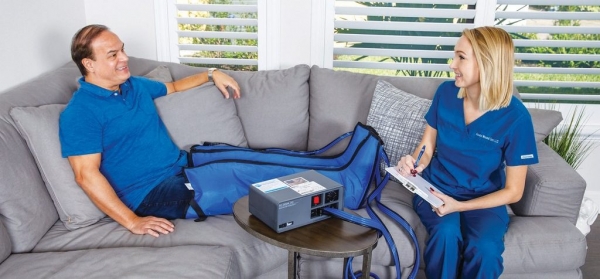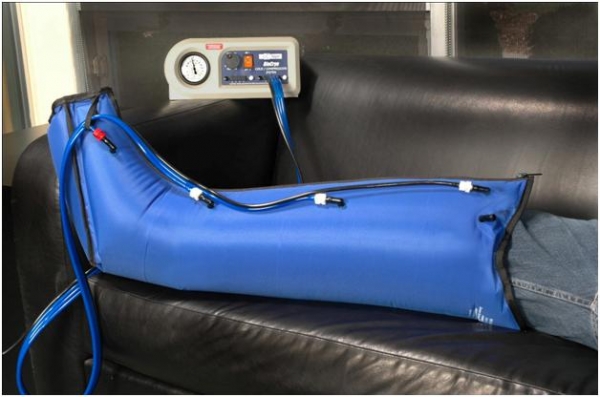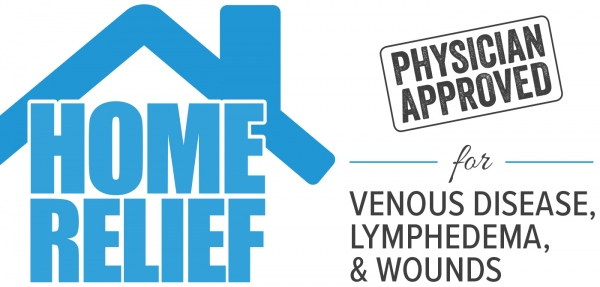
A common challenge faced in the medical field is finding the cause of an individual’s limb swelling. Any limb swelling may be your body’s red flag to a potential underlying condition. When swelling in a limb becomes chronic, pinpointing the origin is vital to getting proper treatment. Some of the most common diagnosis are venous insufficiency and lymphedema. Fluid accumulation can cause painful swelling, non-healing wounds, heaviness, and discomfort decreasing your mobility. Recent studies show that nearly 7 million people in the United States suffer from venous disease. While 2 to 3 million Americans suffer from secondary lymphedema.
CHRONIC VENOUS INSUFFICIENCY
Chronic venous insufficiency (CVI) is when blood is unable to circulate from the lower limbs back to the heart. CVI is caused by incompetent valves and venous hypertension, in both parts of your venous system. The venous system is comprised of two parts, deep circulation and superficial circulation, which are interconnected by perforating veins. Your venous system is an important component to delivering blood to the heart, then passing it through the lungs to obtain oxygen. The oxygenated blood is then delivered to the lower limbs.
VENOUS HYPERTENSION
Venous hypertension leads to secondary lymphedema from the lymphatic system’s inability to keep up with an abnormally high demand of protein-rich fluid. Lymphedema is chronic swelling from protein-rich fluid accumulation in the tissue. Lymphedema occurs secondary to CVI when the lymphatic system is obstructed causing damage, blockage, or abnormal development. Primary lymphedema can be hereditary or congenital, where an individual is born with a compromised lymphatic system.
INTERRUPTED FLOW
Once your circulatory system has been obstructed leading to venous insufficiency or lymphedema, this may lead to an interruption in the venous and lymphatic flow. Both diseases are manageable and treatable.
Risk factors may include:
- Chronic swelling of a limb
- Skin changes such as discoloration or hardening
- Family history
- Invasive surgical procedure i.e. radical cancer surgery
- Chronic open wounds
- Decreased mobility
- Infections such as cellulitis/lymphangitis

Management & Prevention
Understanding the ongoing management of both venous insufficiency and lymphedema are important in preventing irreversible damage to the body. Compression therapy, along with proper nutrition a healthy diet and exercise, are the foundation of a treatment plan. Compression stockings are often difficult to get on with little results for chronic swelling. Diuretics may be harmful for long term treatment. Compression devices are widely recognized and highly effective treatment. This is a safe and effective way to assist your body’s circulatory system in moving the excess fluid which has accumulated in the limb. A pneumatic compression device mimics the muscle contraction that naturally occurs when performing a cardiovascular activity. The compression pump is approved by Medicare and covered by many commercial insurers.
Acute Wound Care is a highly focused local provider for at-home compression device treatment for Venous Insufficiency & Lymphedema and wound products. They are licensed with Medicare and HQAA accredited. The specialists at Acute Wound Care work with your treating physician to ensure the device is medically necessary and also handle all of the insurance processing to receive coverage.
You May Like

Understanding & Effectively Managing Your Chronic Limb Swelling
A compression pump is widely recognized as effective treatment option for limb swelling. Compression pumps are a safe way to assist your body’s circulatory system in moving the excess fluid which has accumulated in the

Home Relief for Venous Disease, Lymphedema, and Wounds - Living Local
For years, Larry Shanaberger has been getting treatment for his venous insufficiency, a condition in which his veins are unable to efficiently circulate blood from his extremities back to his heart. Venous Disease & Lymphedema